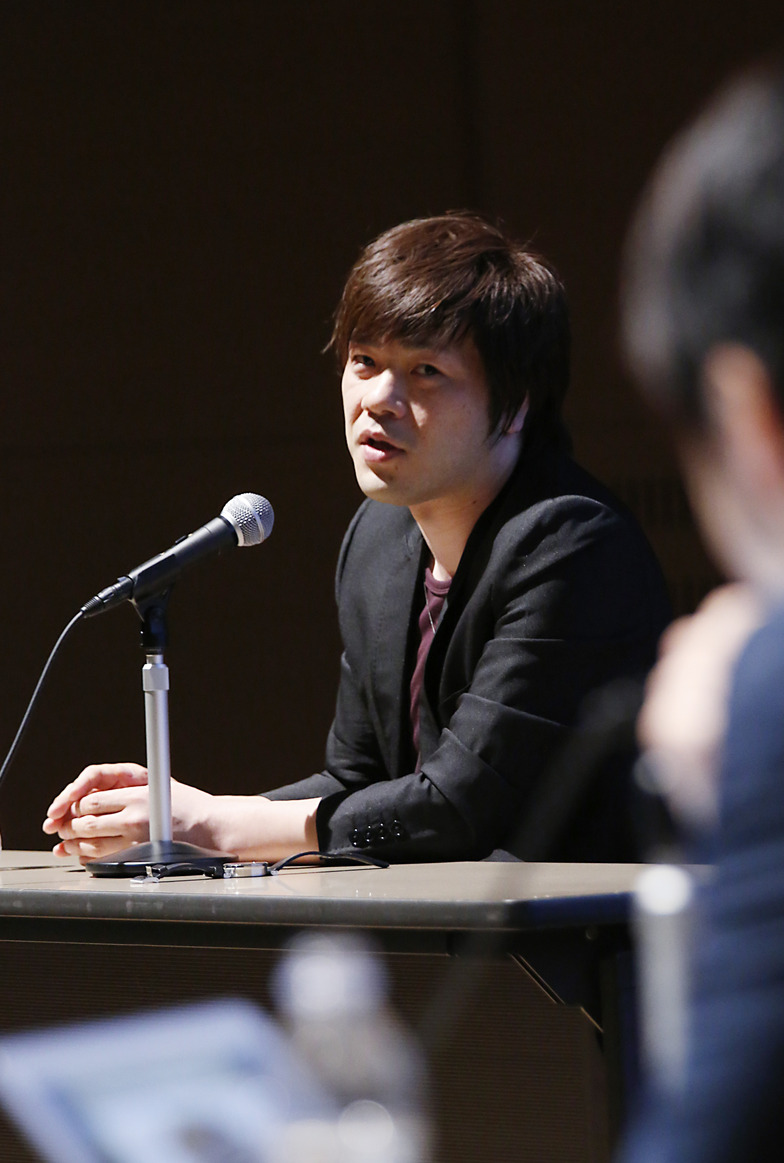The Dentsu Inc. Design Talk held on March 27 featured writer Keiichiro Hirano and design engineer Kinya Tagawa. Hirano's recently proposed concept of "dividualism" posits that humans do not live solely as one individual personality, but possess distinct personalities (dividuals) for each interpersonal relationship, living as a collective of these. Meanwhile, the design engineering firm "takram," led by Mr. Tagawa, adopts a methodology where a single person switches between and combines the two approaches of "design" and "engineering" during development. Though their fields differ, the two share common ground in their underlying perspectives.
Here is the second part of their dialogue on "storytelling" and "craftsmanship." ( Part 1 is here )
When we consider users as "fragmented individuals"
Hirano: I use the concept of "divided selves" as opposed to "individual." While an individual is seen as an indivisible unit possessing a single personality, divided selves hold various personas depending on relationships or locations. I envision personality as a pattern of communication with the outside world, where multiple divided selves coexist within oneself, networked without a central core.
Modern social systems are designed on the premise that individuals possess consistency. The notion that people must be consistent stems from this, leading to anxiety about aspects of oneself that don't fit that mold.
Tagawa: From the perspective of an organism's energy balance, humans are individuals isolated from the outside world by their skin. After all, a fragment doesn't eat meals. However, online, fragments can freely leap beyond distance and time.
I believe this is why there's a disconnect between our thoughts and bodily sensations. There's this incredibly talented programmer who recently joined takram, and watching him, his body just seems like an unbearable constraint to him (laughs).
That sci-fi feeling—like productivity would skyrocket if you could type at 100 times the current speed—is finally becoming reality.
Hirano: It's the gap between our thinking capacity and our physical capacity. I sometimes catch myself thinking while driving, "If only the car would turn right just by me thinking it." But if that actually happened, I wouldn't be able to zone out for even a second. The slack in your arms holding the wheel actually reduces some of the stress of driving.
I believe the defining characteristic of humans in the future will be "exhaustion." As buffers like steering wheels are progressively removed, the need to constantly maintain focus doesn't seem likely to ease. Humans will have no choice but to live as perpetually fatigued beings. Entertainment and everything else will have to be built on that premise.
Speaking of the endocrine system earlier, the body actually has its own mechanism for compartmentalization. Conditions like adjustment disorder or "new-type depression," where you feel gloomy about going to work but energetic enough to travel on days off, show that the body itself possesses this compartmentalization system.
Tagawa: In university, I was taught: "Split a big problem into smaller ones. Keep dividing until you reach the smallest problems, solve them, then bundle the answers together to form a grand solution that resolves the issue." Corporate structures follow the same pattern: under the CEO are finance, marketing, sales, and at the end of that chain are individuals. This system functioned well from the 18th century until the first half of the 20th century.
But now, it no longer fits reality. While voting rights are currently one person, one vote, many people feel conflicted—wanting to vote for one party on this policy but another party on that policy. How much easier it would be if you could write "1/5 Party A, 4/5 Party B" on the ballot.
Hirano: A society where one person pursues self-realization through a single occupation, safely continuing it for 30 or 40 years, has reached its limits. That's why I believe the systems and designs of society must move beyond the "individual" and create smaller units.
What constitutes a happy situation for creators?
Tagawa: Novels might eventually have algorithms embedded within them, allowing the story to unfold differently depending on the reader...
Hirano: Novels can be broken down into story (narrative) and plot (how events unfold and deepen). The novel experience changes primarily based on the plot. Nineteenth-century novels had heavy openings; think of it like the run-up in a long jump – the approach seemed to go on forever. I imagine they needed a certain amount of information to establish realism.
But today, more readers want the run-up as short as possible—they just want to see the jump. The biggest selling point for recent novels is "you won't be able to put it down." Yet I want to write books that make readers think, "Oh, it's ending already?" and pause turning the pages. I want readers to wish they could linger in that moment, and to read it repeatedly, not just once. Does product design reflect this difference in the length of time users engage with it?
Tagawa: The design approach is completely different for something with a lifespan of a few months versus something used for years. For items meant to be used long-term, it's crucial that the trust between the user and the tool doesn't diminish. For example, with plastic materials prone to damage, a scratch can instantly break the connection. So, you might choose materials where scratches become part of the character. As a maker, I consider it a happy situation when I can take time to create something, the user carefully selects it, and then uses it for a long time.
And even after use, they might enter the secondhand market, continuing to exist in the world. Designers often end up in furniture design because good furniture can be used for a lifetime. I think such longevity is diminishing in the product world.
Hirano: In fashion, the internet has made off-season clothes accessible, shifting the trend cycle from six months to a more relaxed three-to-four-year rhythm. It's easier to create your own world than to chase trends.








